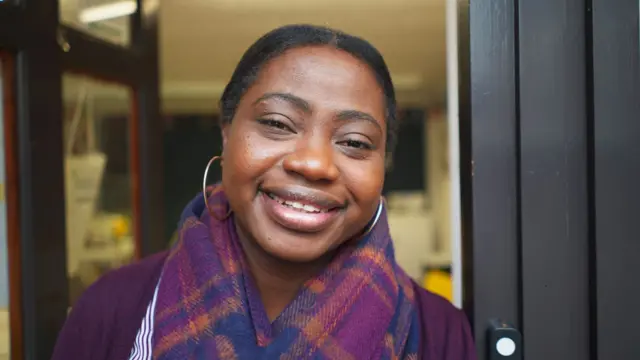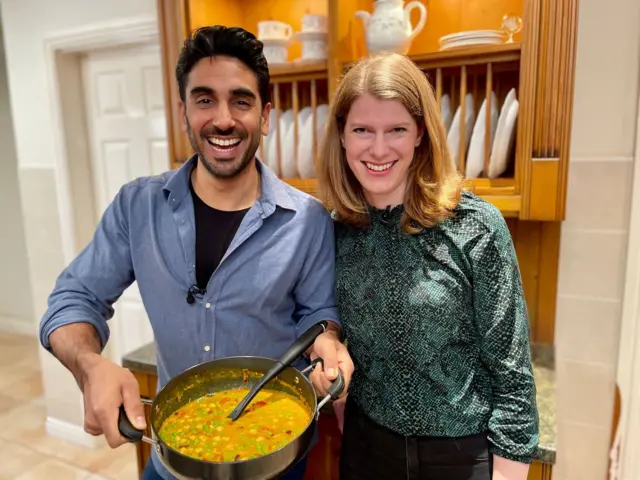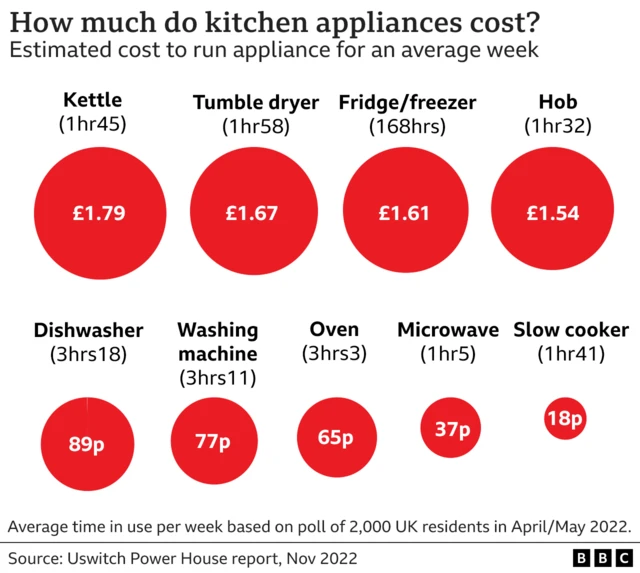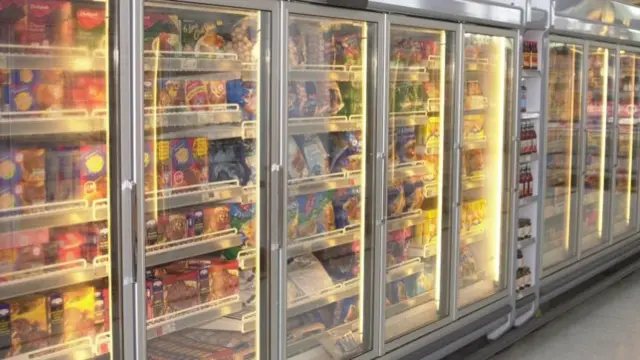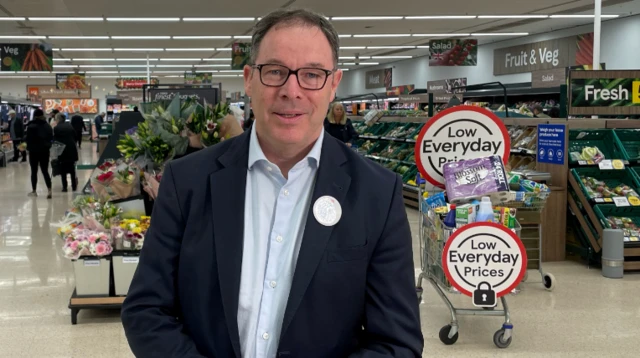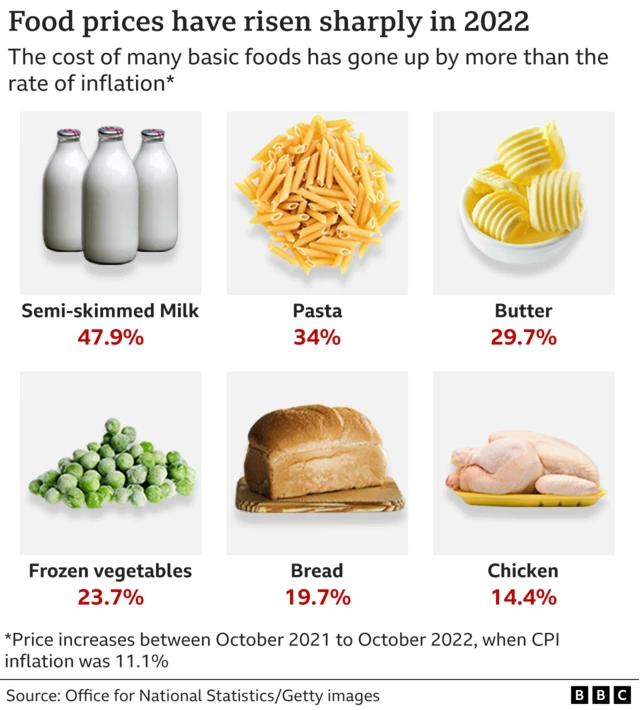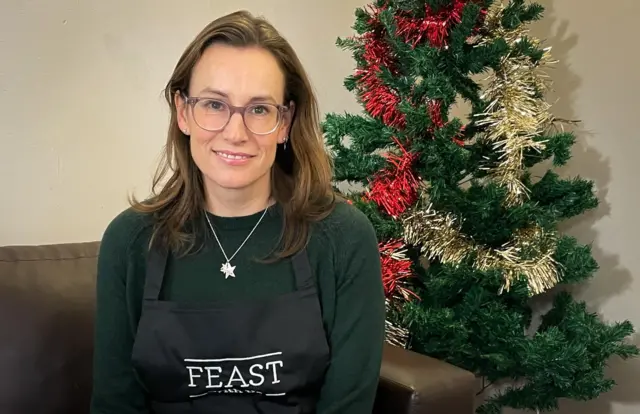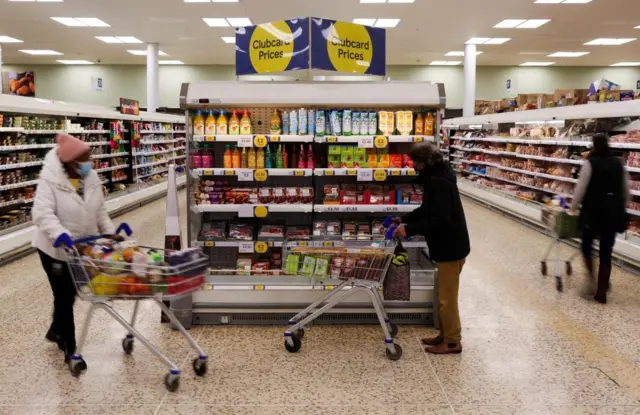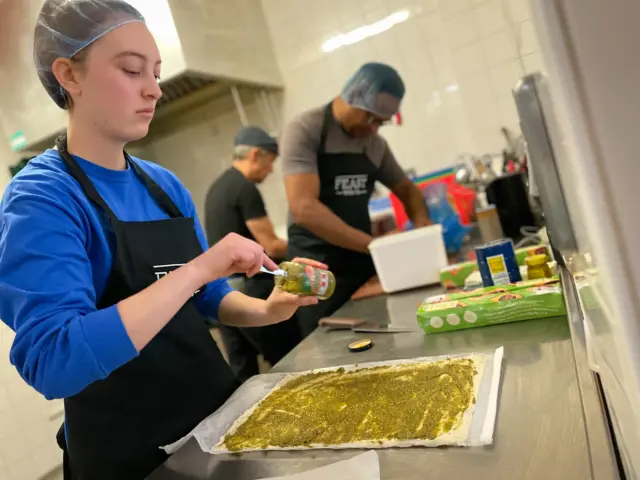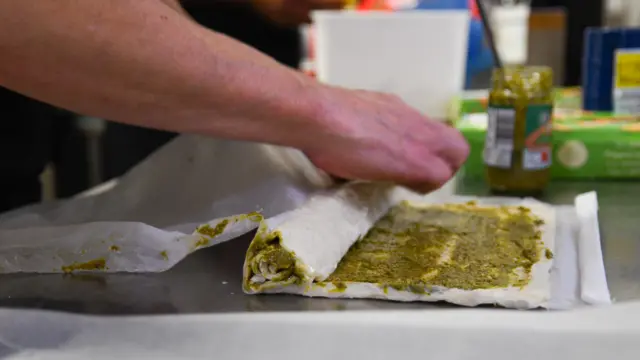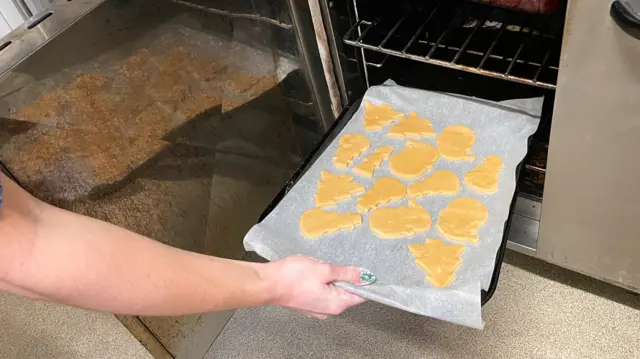'It’s a way of giving back to the community’published at 13:42 GMT 2 December 2022
 Marita Moloney
Marita Moloney
Reporting from north London
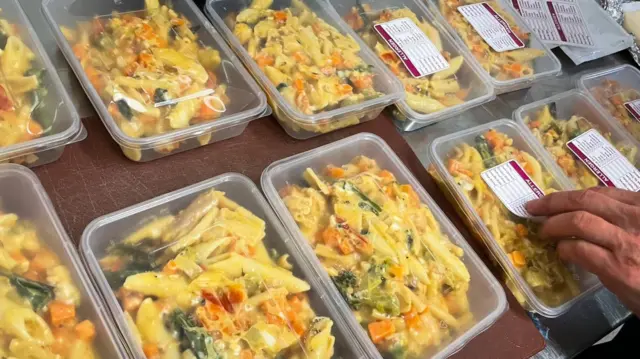
Lunch getting prepared for delivery to a community fridge in north London
Back at the hostel in north London, the first batch of meals are ready for delivery to a nearby community fridge, a social space where people can meet others and enjoy some food.
Aurelija Jancak has arrived with her bike and is loading up the lunches - today it’s vegetable pasta made in the Feast With Us kitchen.
She and her business partner at their delivery company NEKO began volunteering at several charities, including here, during the pandemic.
“It’s nice…it’s a way to give back to the community,” she says.

Aurelija Jancak will deliver the meals on her bike this afternoon

